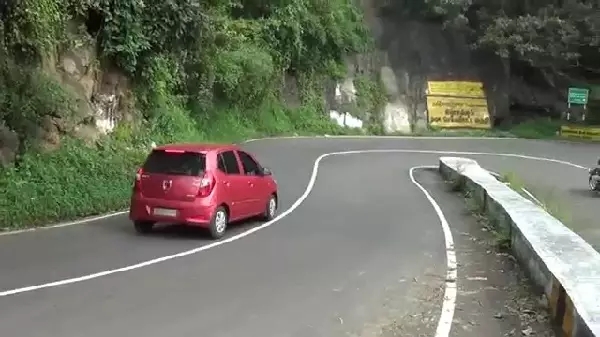
 Data Structure
Data Structure Networking
Networking RDBMS
RDBMS Operating System
Operating System Java
Java MS Excel
MS Excel iOS
iOS HTML
HTML CSS
CSS Android
Android Python
Python C Programming
C Programming C++
C++ C#
C# MongoDB
MongoDB MySQL
MySQL Javascript
Javascript PHP
PHP
- Selected Reading
- UPSC IAS Exams Notes
- Developer's Best Practices
- Questions and Answers
- Effective Resume Writing
- HR Interview Questions
- Computer Glossary
- Who is Who
What is called "Angle of Banking"?
The occurrence of lifting the outer border of the curved road over the inner border is to give necessary combining force to the vehicles to take a guarded turn and the curved road is termed as Banking of Roads. When a vehicle prevails around a curved road, it needs some combining force.

While moving around the curve, the wheels of the vehicle have a propensity to leave the curved path and recover the straight line path. Force of friction between wheels and the roads goes against this propensity of the wheels. This force of friction accordingly acts towards the middle of a rounded track and gives the essential combining force.
In the above discussion, we observe that the maximum allowable velocity with which a vehicle can go around at a level curved road relies on μ, the collateral of friction between tyres and road. The value of μ lessens when the road is damped or additionally smooth or tyres of the vehicle are exhausted.
Therefore, the force of friction is not a dependable source for giving the needed combining force to the vehicle. Particularly in hilly areas where the vehicle has to move continuously along the curved track, the greatest speed at which it can race will be too low. If any trial is made to race it at maximum speed, the vehicle is probably to slip and go out of track.

In order of priority that the vehicle can go round the curved track at a sensible speed without slipping, the adequate combining force is handled for it by lifting the outer border of the track a bit over the inner border. It is termed as banking of the circular track or Banking of Roads.
Roads are basically banked for the mean speed of vehicles. However, if the speed of a vehicle is a little less or more than this, the self-setting state friction will work between tyre and road and vehicle will not slip.

